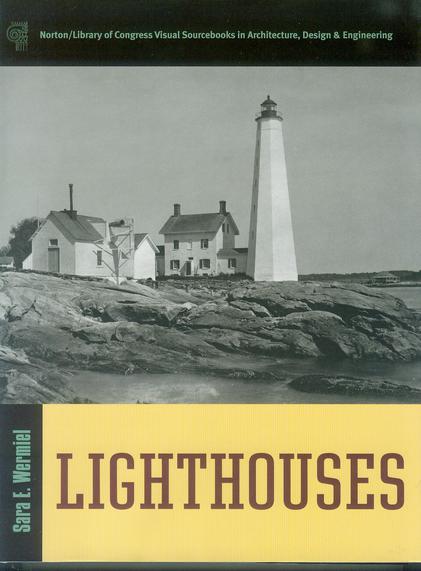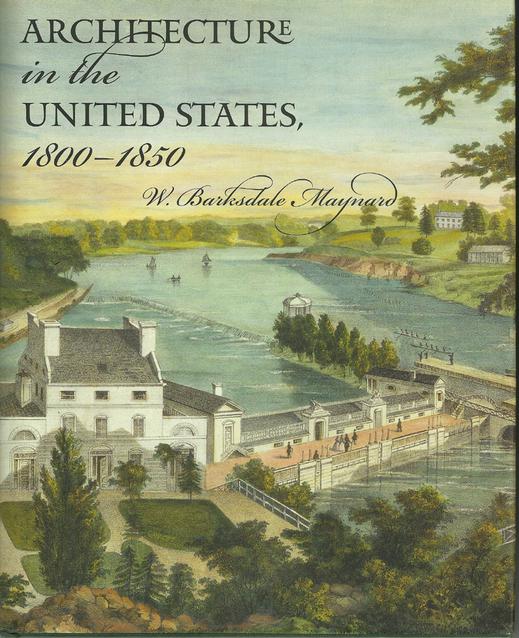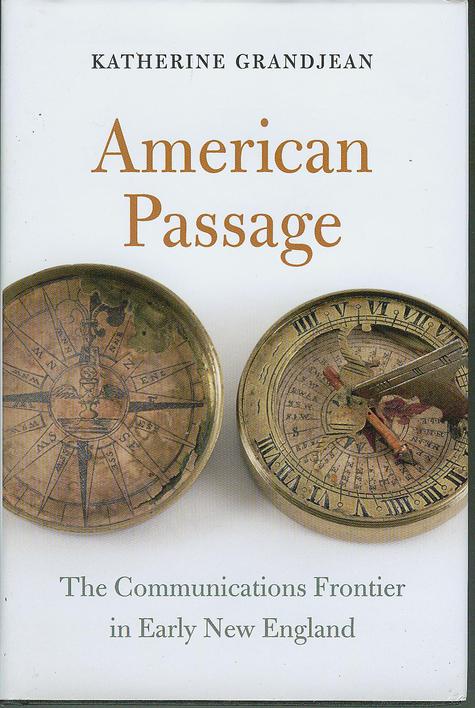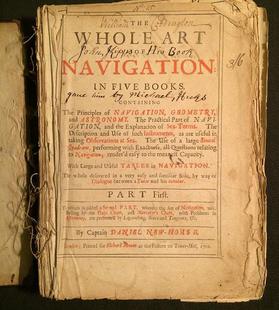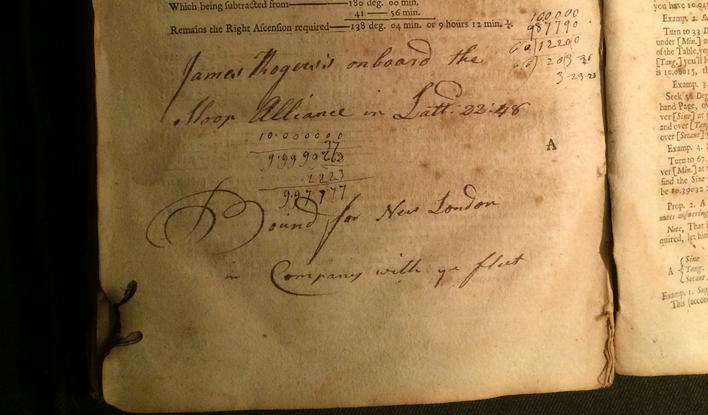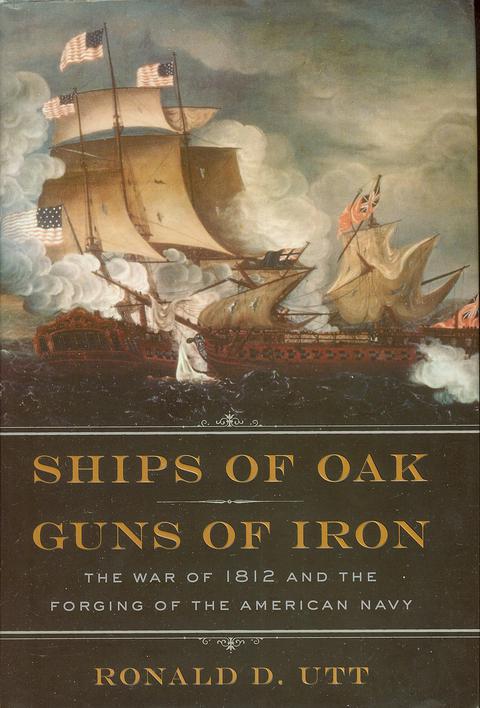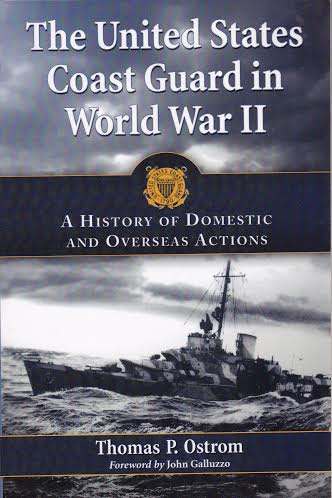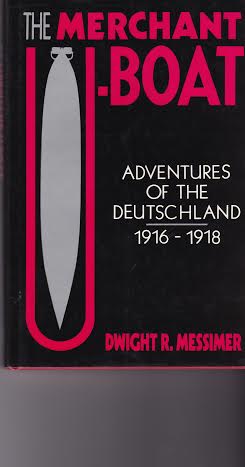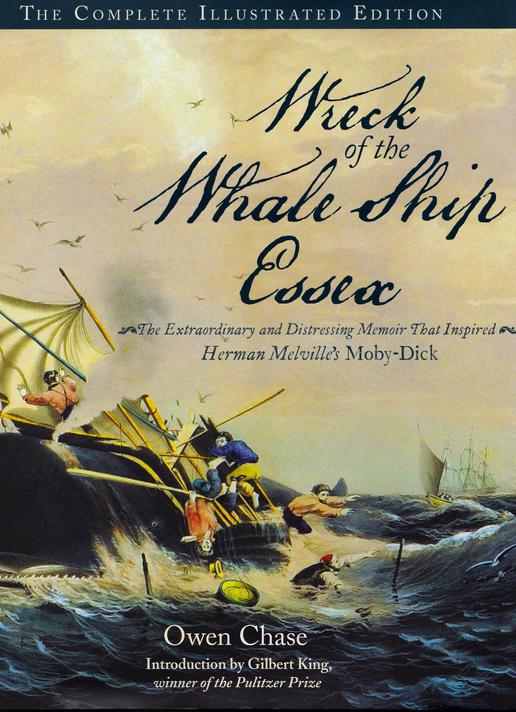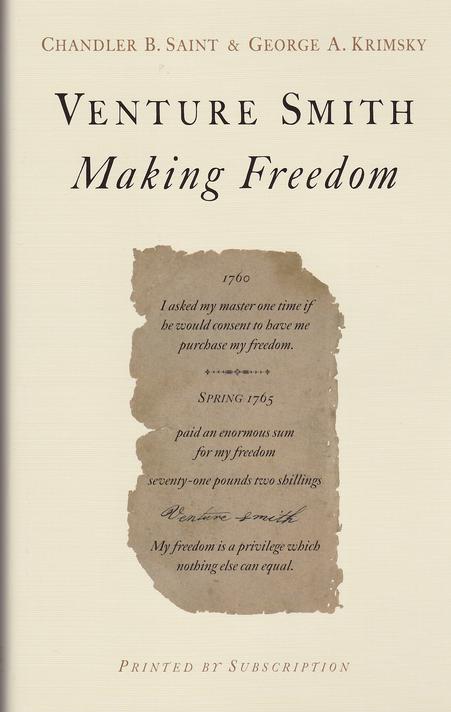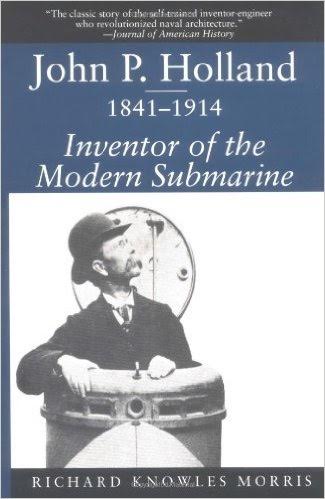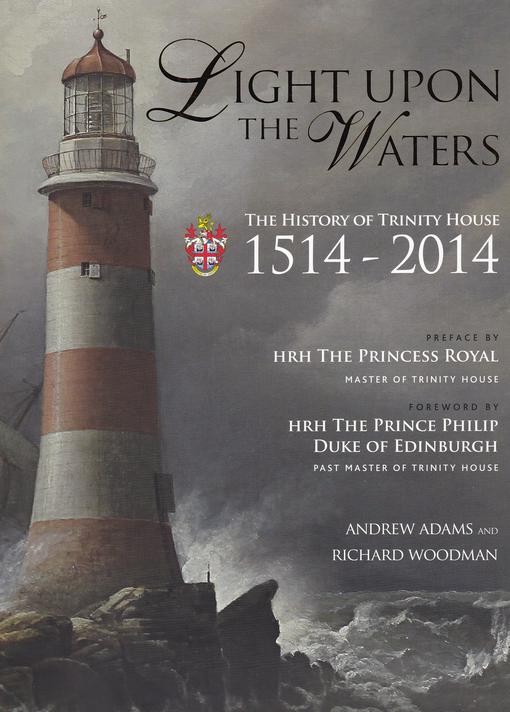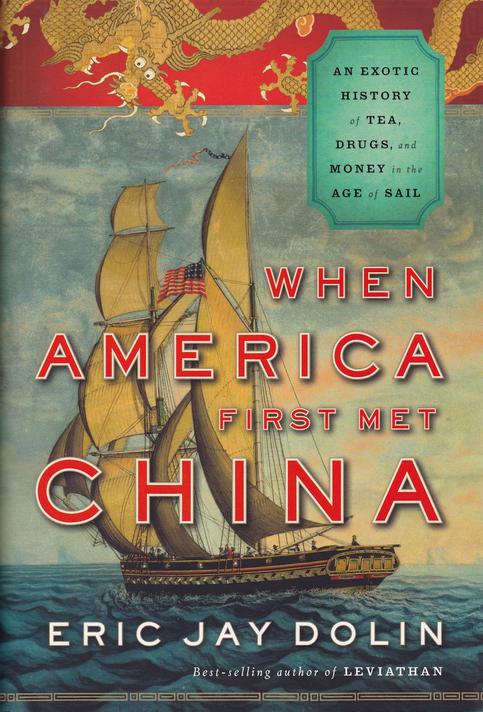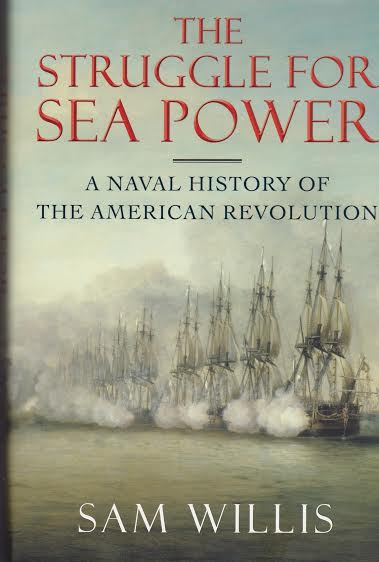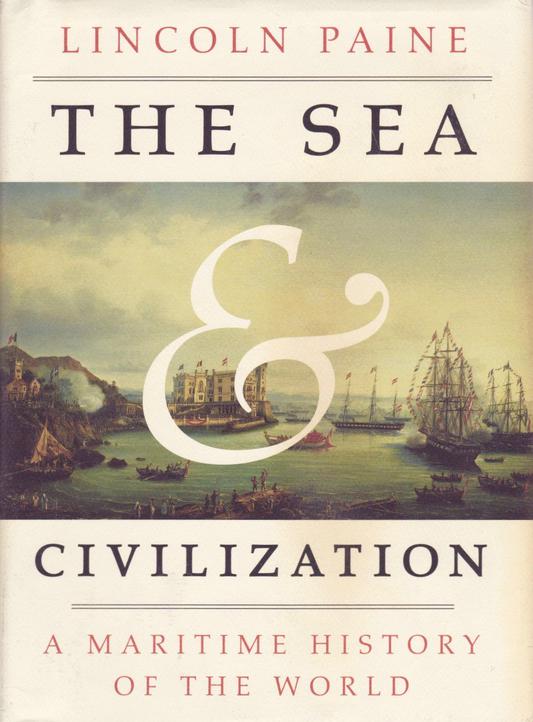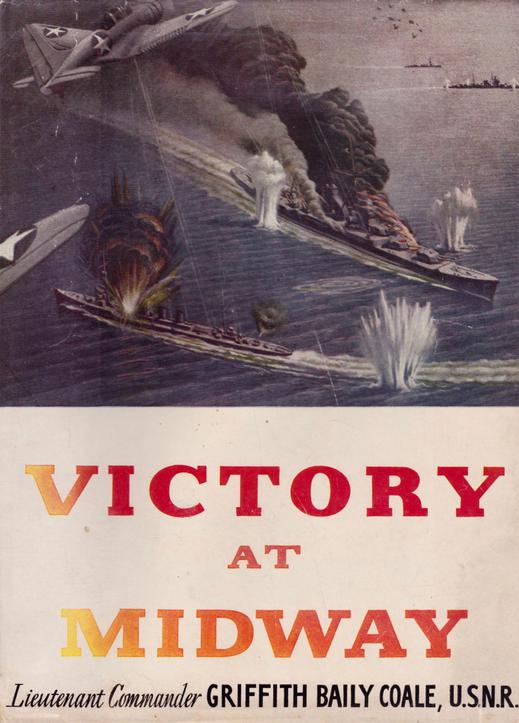May, 2011
The LIGHTHOUSES OF CONNECTICUT is one of a series of books about New England lighthouses by Jeremy d'Entremont, one of the foremost current authorities on this ever-fascinating subject. Jeremy has also edited new editions of the popular books of New England maritime history by the late Edward Rowe Snow, and we are delighted that he will speak at our Sentinels of the Sound symposium in July.
We have been expanding the lighthouse book collection in recent months to support the Maritime Society's new custodianship of New London Light, and in so doing have discovered that our area is unusually rich in lighthouse research material: in addition to the approximately fifty titles now at the Custom House (all available for consultation by calling 860 572-0291 for an appointment), the Public Library of New London has good lighthouse holdings, including many appealing items for children and young adults; the Coast Guard Academy Library complements the two downtown collections with special strength in the history and technology of lighthouses, while the library of the University of Connecticut at Avery Point also owns a number of lighthouse books, as does the G.W. Blunt White Library at Mystic Seaport.
June, 2011
Sara E. Wermiel: LIGHTHOUSES.
New York and London, W. W. Norton & Company, 2006
This handsome work is one of the "visual sourcebooks in architecture, design and engineering" published by the Library of Congress in partnership with Norton. Other volumes feature such structures as barns, theaters, canals and bridges, and all are projects of the Library's Center for Architecture, Design and Engineering, established by a bequest from architect Paul Rudolph, famed former Dean of Yale's School of Art and Architecture. Each volume draws from the vast image collections of the Library of Congress, the largest library in the world and, incidentally, the nation's oldest federal institution.
New London's two lighthouses are here, of course, along with hundreds of others that together comprise a magisterial illustrated survey of the history and design of these American landmarks, from their 18th century origins to the l960s. A feature not found in most lighthouse books is the cross-sections and elevations of towers, lanterns and lenses that elegantly show how lighthouses were put together to fulfill their unique humanitarian purpose.
July, 2011
F. Hopkinson Smith
Caleb West, Master Diver
Francis Hopkinson Smith was a popular author in his day, one of his best known works being Caleb West, Master Diver, first published in 1898, a romantic novel set in the challenging, real-life circumstances of constructing Race Rock Light in the treacherous currents off Fisher's Island. Smith was something of a polymath, being not only a writer but a civil engineer and an artist whose drawings of European scenes were much sought after. With Smith as designer/engineer of Race Rock Light, New London's own "master diver," the uniquely skilled Capt. Thomas A. Scott carried out the actual building of the foundation on the submerged reef, a dangerous project lasting almost seven years. (The lighthouse itself took only nine months.) Ten years after Caleb West, Smith acknowledged Capt. Scott's extraordinary achievement in an adulatory description of his friend and business partner in a volume of character studies called "True American Types," a series published in Boston by the American Unitarian Society. A copy of this scarce item recently acquired by Museum Director Susan Tamulevich now complements our two copies of Smith's novel with their handsome variant bindings.
August, 2011
James Tertius De Kay
A Rage for Glory:
The Life of Commodore Stephen Decatur, USN
One of the most rewarding parts of developing the Frank L. McGuire Maritime Library is to track down books that illuminate New London's rich maritime past. This quest recently yielded A Rage for Glory, local author James Tertius De Kay's biography of Stephen Decatur, the celebrated naval officer who brought two frigates and a sloop into New London harbor in June, 1813, to escape a British squadron of superior strength.
Although the British were denied capture of the American ships, their blockade of New London trapped the ships here for the duration of the War of 1812. Decatur himself was able to leave, took command of another ship, was taken prisoner and repatriated after the war (on a ship that brought him from Bermuda to New London) and became even more famous for his bold actions against the Barbary Pirates. He and his wife retired to a mansion they built near the White House, but enjoyed his celebrity for only fourteen months due to his shocking death in 1820, age 41, in a duel with a rival officer.
Our Library also owns Mr. De Kay's The Battle of Stonington, an account of the attack on the village in August of 1814 under the same Royal Navy captain, Thomas Hardy, who had trapped Decatur's ships in the Thames River the year before.
September 2011
Chandler B. Saint and George A. Krimsky
Making Freedom: The Extraordinary Life of Venture Smith
Middletown: Wesleyan University Press, 2009
The inspiring story of Venture Smith (ca. 1729 - 1805) , a slave who succeeded in buying his freedom (in Stonington, in 1765, where he had lived since 1754) is presented here with instructive, eminently readable commentary and well-chosen illustrations. Our copy is a gift from Archie Chester, a long-time supporter of the Frank L.McGuire Maritime Library. The chief source of Venture's story is the remarkable account of his life he dictated, near its end, to a schoolmaster, first published in 1798 in New London. Not surprisingly, the long, twisting chronology, from enslaved African prince to free, prosperous landowner at Haddam Neck, plays out against a maritime backdrop: the voyage from Africa to Rhode Island by way of Barbados; criss-crossing Long Island Sound over the years between Rhode Island, Fishers Island, Stonington and Long Island; life along the Connecticut River. The more surprising backdrop, however, is the steady reminder that slavery was as ingrained in parts of southern New England as firmly as in the Deep South -- a fact which may not be familiar to some readers -- with the largest concentration of slaves living in New London County. Unlike the South, of course, the "institution" gradually waned here, and we are more likely to think of New England as a complex of stations on the Underground Railroad, by which many slaves escaped to freedom. It is well to remember that even in 1839, when a navy officer brought the slave ship Amistad to New London, he did so because slavery was still legal in the state and he intended to sell the captives.
As it happens, September is Connecticut Freedom Trail month, the annual commemoration of that decades-long effort to help slaves reach freedom in the North and Canada. The term "Underground Railroad" gained currency in the early 1830s as a metaphor of the burgeoning growth of the steam-powered railroads. New London's Custom House, opened in 1833, is one of three New London sites on the Freedom Trail, the others being a grave in Ye Antientest Burying Ground and the Hempsted House and district. Fort Griswold, the whaleship Charles W. Morgan, and the former shipbuilding community of Greenmanville (now preserved at Mystic Seaport) are also on the Trail.
October 2011
Marc Songini
The Lost Fleet -- A Yankee Whaler's Struggle Against the Confederate Navy and Arctic Disaster
New York, St. Martin's Press, 2007
There are travails aplenty in this account of whalers struggling to prosper in a dying industry. The Yankee whaler of the title is Thomas W. Williams of Wethersfield, whose long, lively career is one of the threads of Songini's breezy narrative. Even in the best of times whaling was arduous, dangerous work, with ships and their crews enduring storms in temperate waters or ice in the frigid north. Then came the Civil War, with Confederate raiders raising havoc with Yankee whalers and a Union plan to hinder Confederate shipping by blocking the harbors of Charleston and Savannah with stone-laden ships scuttled at the entrances. A number of whalers lay idle in New England at the start of the war, many of them old and worn out, and against the advice of cooler heads the so-called "Stone Fleet" was cobbled together in New Bedford and New London; government agents bought whaler after whaler, including the Corea, Tenedos, and four other New London-based ships. These were heavily loaded with stone and in November, 1861, sailed southward in a barely seaworthy armada. As it happened, the Stone Fleet was a costly failure, despite its vigorous promotion and preparation, but idea was bold, if flawed, and the New London references will be of interest to local history buffs.
November 2011
Judith Navas Lund
WHALING MASTERS AND WHALING VOYAGES SAILING FROM AMERICAN PORTS: A Compilation of Sources
Published in 2001 in a limited edition of 500 copies by the New Bedford Whaling Museum, Kendall Whaling Museum, and Ten Pound Island Book Company
Our latest library purchase comes on the tenth anniversary of the publication of what Stuart M. Frank, Curator of the New Bedford Museum, called "the most important whaling history desk reference to appear in a generation." Whaling Masters and Whaling Voyages is a list of all known whaling voyages from the late 18th century to the early 20th. Half of the hefty tome lists voyages by name of vessel, and the other half lists them by name of the ship's master.
Each entry includes the name of the "hailing" port, rig of the vessel, years of departure and return, location of logbooks when known, and sources of the data. The logbook locations are an impressive and indispensable feature not found in earlier attempts to document whaling voyages. New London, Mystic and Stonington appear frequently, of course, and Groton, Norwich and Saybrook also turn up now and then.
Judith Lund's painstaking work updates, expands and corrects earlier efforts, notably Alexander Starbuck's History of the American Whale Fishery (also in our library), and Reginald Hegarty's Returns of Whaling Vessels Sailing from American Ports. It also supplants Whaling Masters, a work issued by the Federal Writers Project in 1938, one of the less well known job-creation programs of the Roosevelt Administration. For many years Whaling Masters was the most important list of those intrepid seafarers who were the driving force behind the whaling trade. Judith Lund is former Curator of the New Bedford Whaling Museum. The Kendall Whaling Museum, formerly in Sharon, Massachusetts, has been incorporated into the New Bedford Museum since this book was published.
December 2011
W. Barksdale Maynard
Architecture in the United States 1800-1850
New Haven, Yale University Press, 2002
Notwithstanding the alluring 1838 view of the Schuylkill River and Philadelphia's Fairmount Waterworks on its jacket, one would rightly ask why this book is owned by a maritime library in New London, Connecticut. The answer lies in the photograph on the back, an 1846 view of Robert Mills's great 1840 Greek Revival building for the U.S. Patent Office in Washington. Mills, architect of our 1833 New London Custom House, was important enough in Maynard's narrative to rate more than 40 index references. He was the first professional American-born architect, was mentored by Thomas Jefferson (actually living at Monticello for a time,) and was later responsible for three more prominent capital landmarks, the Washington Monument, the Treasury, and an early post office headquarters. New London's custom house is a restrained example of the architectural style that dominated the first half of l9th century America, although it was being challenged as early as the 1830s, when our Custom House was built: William Ross, an Englishman visiting New York in 1834, observed that "The Greek mania here is at its height, as you may infer from the fact that everything is a Greek temple, from the privies in the back court, through the various grades of prison, theatre, church, custom-house, and state-house." The mania faded, of course, but fortunately for posterity countless examples remain, gracing the nation's streetscapes with their timeless symmetry.
January 2012
Harold M. Hahn
Ships of the American Revolution and their models
Naval Institute Press, Annapolis, 1988
One of the most generous donors to the Frank L. McGuire Maritime Library is Robert Stewart of Mystic, retired engineer and model-maker extraordinaire. His handsome ship models, fitting easily into the shelving, add a distinctly nautical theme to the room. Our shelves also hold well over one hundred books donated by Bob in the past two years, and we have chosen one of them for our January feature: Harold M. Hahn's Ships of the American Revolution and Their Models, published in 1988 by the Naval Institute Press in Annapolis. The book is of interest to more than the fraternity of model builders, however: before discussing the models of seven different ships, the author provides a fascinating account of the history of each, among them the story of the ill-fated frigate Confederacy, built on the Thames at Norwich as part of a program authorized by Congress in 1776 to develop the colonial navy. After much delay due to lack of materials and many administrative problems, the ship was launched in 1778 and towed to New London for fitting out under Capt. Seth Harding. The short career of Confederacy is a litany of misfortune that reads like the synopsis of a historical adventure novel, ending with her capture by the British off Delaware in April, 1781. After initial optimism that she could be converted into a 40-gun ship of the line, the Royal Navy declared that after a close inspection the renamed HMS Confederatewas in fact unfit for service after three tumultuous years afloat. She was, nevertheless, a very handsome ship, as is apparent from the plans that the author reconstructed from the originals in England's National Maritime Museum.
February 2012
W. Jeffrey Bolster
Black Jacks: African American Seamen in the Age of Sail
Cambridge: Harvard University Press, 1997
For Black History Month we present a book dealing with the considerable part played by Black Americans, both slave and free, in the maritime life of the colonies and the new nation that emerged after the Revolution and the War of 1812. The author opens with a moving quotation from Frederick Douglass, a skilled ship caulker in Baltimore who knew a great deal about ships and sailing: "Those beautiful vessels, robed in white, and so delightful to the eyes of freemen, were to me so many shrouded ghosts." Calling them "freedom's swift-winged angels," he swore that one of them would someday bear him to freedom.
A sailor's life at sea in the Age of Sail was harsh, marked by low wages, hard work and extreme discomfort. Many whites, perhaps most, wouldn't consider seafaring, but for slaves and freedmen of a certain bent it represented opportunity. Even with its privations and brutality, a sailor's life was considered preferable to the punishing toil and other horrors common in southern plantation life. Bolster examines all aspects of this fascinating history, noting among other things that 18,000 free blacks saw sea service in the War of 1812, that several generations of black men "partially circumvented the racist norms of American society" in becoming part of the international maritime culture, and that as a result of their travels abroad, black mariners were "central to the process through which early black society constructed and defined itself."
March 2012
Thomas C. Gillmer
Old Ironsides: The Rise, Decline and Resurrection of the USS Constitution
Camden, Maine: International Marine, 1993
New Londoners enjoy a unique link to the frigate USS Constitution, that storied centerpiece of the historic Charlestown Navy Yard. Following one of her several rebuilds, some of the replaced planks were fashioned into the massive doors of the Bank Street Custom House. With this in mind, our book of the month is Thomas Gillmer’s authoritative look at the Constitution's wood structure, from her launch in Boston in 1797 as an exemplar of the finest in American shipbuilding, through two wars of independence, and the two ensuing centuries during which she was almost scrapped several times, rehabilitated as often (and not always in the best way) until she was at last recognized as a priceless national symbol to be preserved at all costs. The author, a former professor of naval architecture at the Naval Academy and an eminent yacht designer, was asked by the Navy in 1991 to study the Constitution and recommend action to ensure her long-term survival. His book is an eminently readable, occasionally feisty, and handsomely illustrated report on the six months he spent on the project. Gillmer found the ship to be a "deteriorating national monument" and was not shy about saying what should be done. Whether those ultimately responsible agreed is perhaps known only to them and to Gillmer. Meanwhile, a Boston website (NorthEnd.com) reported in October, 2009, on the occasion of one of Constitution's famous harbor turn-arounds, that she was undergoing a three-year restoration to prepare for the bicentennial of the War of 1812.
Our copy of Gillmer's book is from the estate of the late Dan Wolverton, a maritime history enthusiast and dedicated long-time proponent of the Custom House Museum.
The family-friendly USS Constitution Museum at Charlestown Navy Yard serves as the "memory" and "educational voice" of the famous ship docked just outside. From time to time it offers programs on other aspects of maritime history as well: through March 24, for example, it is hosting the 33rd annual Model Shipwright Guild Exhibit, sponsored by the Boston Marine Society. The Guild encourages the art of modeling with workshops, activities, and exhibits, while the Boston Marine Society resembles our own New London Maritime Society, telling the story of the port of Boston through its archives, gallery, and outreach programs.
April 2012
Geoff Hunt
The Sea Painter's World: The New Marine Art of Geoff Hunt
London, Conway, 2011
We have long admired the work of Geoff Hunt, one of Britain's foremost marine painters, artist of the covers of Patrick O'Brian's Aubrey-Maturin novels and occasional visitor at Mystic Seaport, which has published some of his prints and one of his books. The new book is a sequel to a similar 2004 work, both volumes presenting examples of his work amplified by his own commentary. We were delighted to find, on the last page, a picture worth the price of the book: an oil entitled "Captain Hardy's Ramillies after the 'Battle of Stonington', August 1814." We see the British squadron after it has stood into the Sound following the bombardment, the sunny skies untroubled by the wispy smoke rising from the distant shore. Hunt has painted several 18th and 19th century American subjects, but this is the first we have come across depicting a historical scene so close to home. A photo of a model of HMS Ramillies, and photocopies of several naval reports written aboard her, are part of our Robert Bachman Archive on the War of 1812.
Here at the Frank McGuire Library our interest in marine art is focused on a subset of the genre in which artists document or re-imagine places and events in history. Probably the best known American practitioner of documentary marine art is John Stobart: both of his impressive large-format books are in our collection and, as it happens, one of these, American Maritime Paintings of John Stobart, was acquired some years ago by our founder, the late Lucille Showalter, in memory of Attorney Frank L. McGuire.
BOOK OF THE MONTH
Selected and reviewed by Brian Rogers, Librarian
January/February 2015
AMERICAN PASSAGE
The Communications Frontier in Early New England
Katherine Grandjean
Cambridge and London, Harvard University Press, 2015
The author of this highly readable study offers a new approach to understanding life in seventeenth century New England. New London's founder, John Winthrop Jr., and other prominent English colonizers such as Roger Williams and John Winthrop Sr., were inveterate letter writers, and these writings have come down to us as a trove of information about early colonial life. The Winthrop Family Papers at the Massachusetts Historical Society are a particularly voluminous resource. Letters conveyed news, advice, secrets, instructions and warnings, and were the glue that held the far-flung settlements together. But in the absence of anything resembling a postal service, how did these letters reach their addressees? The author describes how many were carried by English coastal traders, putting into bays and rivers with their goods, while many others were entrusted to Indian couriers who carried them along the forest trails. These letters often mention the scarcity of food, suggesting that it was hunger and the competition for corn, a diet staple, that led to much of the conflict between and among the English and the Indians.
April 2015
THE WHOLE ART OF NAVIGATION
Daniel Newhouse
London, Richard Mount, 1701
For the ancient Chinese and Greeks, for Columbus, and even for the captain of the Mayflower, navigation was an uncertain amalgam of art and science in which luck also played a part. Capt. Newhouse’s treatise, first published in 1685 and reissued four or five times, was one of several attempts to describe the techniques of navigation as they evolved from ancient methods of celestial observation to the 18th century inventions that would allow longitude to be accurately calculated. Our copy is the second edition, once owned by James Rogers, a prominent New London sea captain who died ca. 1754 and probably bequeathed it to his mariner son James. Among other libraries with this edition are Harvard, the Peabody Essex Museum, and the Smithsonian. Other editions are owned by the Mariners’ Museum, the National Maritime Museum at Greenwich, England, Oxford University, the Universities of Glasgow and Edinburgh, Princeton and the Merchant Marine Academy at Kings Point. The work is also available in online or microform versions, and, like so many antiquarian books, can now be bought as a reprint on demand. We’re proud to be among the few libraries holding a print edition issued by London stationer Richard Mount, whose shop at Tower Hill was in the vicinity of the high ground to which prominent political prisoners were taken from the Tower of London for their very public execution.
March 2015
SHIPS OF OAK, GUNS OF IRON
Ronald D. Utt
Washington, Regnery History, 2012
The lively commemoration of the bicentennial of the War of 1812 is over, but this winter's celebratory ball at New London's 1784 courthouse - recalling an actual event - reminds us that the conflict didn't end until 1815. Even after the treaty was signed on Christmas Eve, 1814, in what is now Belgium, the glacial pace of communication meant that American ratification didn't occur until February and naval hostilities continued in remote places until summer. One of these encounters involved the brig
Hornet, which had been trapped in New London by the British blockade early in the war. Escaping,Hornet went on to participate in several operations, among them defeat of HMS Penguin in the South Atlantic on March 23,1815, three months after the treaty was signed and five weeks after the Senate ratified it.
May 2015
MOBY DICK
Herman Melville
New York, Garden City Publishing Co., 1937
Two subjects central to the Society’s mission, whaling and customs collection, come together in this month’s selection. You might well ask what Moby Dick has to do with customs collection. As it happened, the commercial failure of Melville’s 1851 novel, not yet widely seen as a masterpiece, forced its author to take a paying job to stay afloat financially. From 1866 to 1886 he was employed by the U.S. Customs Service as Inspector for New York, trying to write on the side. This year US Customs and Border Protection is celebrating the 225th anniversary of the formation of the Customs Service, inaugurated in 1789 and folded into the Department of Homeland Security in 2003, 225 years later. Watch for news of a forthcoming exhibit on Customs history at the museum now being planned by several retired Customs officers. Our copy of Moby Dick features the arresting illustrations of Rockwell Kent, which are said to have revived interest in this novel now numbered among the most important works of American literature.
June 2015
THE AMISTAD REBELLION
An Atlantic Odyssey of Slavery and Freedom
Marcus Rediker
New York, Viking, 2012
With the Amistad replica open for tours this summer at the pier behind the Custom House, near the spot where her prototype dropped anchor in 1839, we draw attention to one of the best books about the infamous shipboard rebellion. “Using newly discovered evidence…[Rediker] reaches back to Africa to find the rebels’ roots, narrates their cataclysmic transatlantic journey, and unfolds a prison story of great drama and emotion” (from the dust jacket.) The author, Distinguished Professor of Atlantic History at the University of Pittsburgh, gave a memorable talk on his work at the Custom House in 2012. Among his other books are The Slave Ship: A Human History; Villains of All Nations: Atlantic Pirates in the Golden Age; and Between the Devil and the Deep Blue Sea: Merchant Seamen, Pirates, and the Anglo-American Maritime World, 1700-1750.
July and August 2015
OCEAN BEACH PARK SCRAPBOOKS
1938 to about 1960
Lucille Showalter
The 75th anniversary of Ocean Beach Park this year is a good reason to feature these "books," especially during the beach-going months of July and August. For years they lay unnoticed in the sub-basement of the Custom House. and have now been photocopied in new bindings for preservation by Eugene Macmullan, our conservator. The late Mrs. Showalter was still a teenager when she began clipping news stories about the beach after the 1938 hurricane ravaged it and its beachfront homes. The early history of the park, from the decision to create it, to its triumphant opening in 1940 and beyond, is chronicled in this unique resource. An array of colorful parking permits, admission tickets, Gam menus and other documents has also been preserved. No subsequent editions of "Ocean Beach News" are present, however, suggesting that wartime restrictions led to its demise after this issue.
September 2015
THE UNITED STATES COAST GUARD IN WORLD WAR II
Thomas P. Ostrom
Jefferson, NC: McFarland, 2009
World War II ended September 2, 1945, when the Japanese surrendered on the deck of the Missouri. To commemorate that momentous event seventy years later in “Coast Guard City” New London, we chose a book describing the role the Coast Guard played during that war. The author, a former reservist active in the Foundation for Coast Guard History, felt that public knowledge of the subject was incomplete and decided to amplify existing accounts with his own research. The book has been criticized for omissions and editing, but it is still useful for its descriptions of the initiative and valor displayed by CG personnel, among them Signalman 1st Class Douglas Munro, fatally wounded on Guadalcanal in September, 1942, after leading an action to evacuate the last of 500 Marines off the beachhead under heavy fire. His last words were: “Did they get off?” Munro Hall at the Academy bears his name, as do the 1971 cutter Douglas A. Munro (WHEC-724) and a U.S. Navy destroyer escort. The Coast Guard HQ building in Washington was named for Munro just two years ago, and a Legend-class cutter now under construction will perpetuate his name afloat. A page on the Coast Guard website is devoted to Douglas Munro’s dramatic and moving story.
October 2015
THE AUTHORITY TO SAIL
The History of U.S. Maritime Licenses and Seamen’s Papers
Commodore Robert Stanley Bates
Elkton, Florida: Batek Marine Publishing, 2011
During his career in the Coast Guard and merchant marine, Cmdr. Bates became intrigued by the history of marine certification and the elaborate designs of late 19th and 20th century licenses. Within the pages of this large-format book dozens of licenses are shown, the dominant feature an engraved vignette of a ship representing a type of vessel. The author also delved into the history of the actual ships or boats used by the engravers for this purpose. The 1898 license shown here depicts the U.S. Revenue Cutter Salmon P. Chase, a school ship for cadets featured in Norman Brouwer’s current Coast Guard exhibit at the Custom House. The chapter on yacht officer licenses includes a photograph of Julius Fleischmann’s 1909 luxury yacht “Whirlwind” during a Harvard-Yale regatta, the license vignette drawn from the photograph. The author inscribed this copy to Dr. George A. Sprecace, who recently gave it to the library.
November 2015
THE MERCHANT U-BOAT
Adventures of the Deutschland 1916-1918
Dwight R. Messimer
Annapolis, Naval Institute Press, 1988
New London’s great marine engineer, Thomas A. Scott (1830-1907), has been much on our mind this month, prompted by Pierce Rafferty’s November lecture at the Custom House, and by mention of a tragic loss by his company that Associate Librarian Laurie Deredita found in our Scott materials. While escorting the German cargo submarine Deutschland out of New London in the wee hours of November 17, 1916, the T. A. Scott, Jr. was accidentally rammed by the submarine in a powerful flood tide within sight of Race Rock Light and sank with all hands. Ironically, the completion of Race Rock Light in 1878, was one of Capt. Scott’s most celebrated achievements. This unfortunate incident is but one piece of the strange story of Germany’s one-of-a-kind commercial submarine, which called at New London during World War I while America was clinging to neutrality even after the atrocities in Europe and the torpedoing of the Lusitania. The murky relationship of the German cargo submarine program and New London in those tense days suggested that there was more going on than the innocent transshipment of cargo at the State Pier. And as the author's research revealed, there was.
December 2015
SHIPS, CLOCKS, AND STARS
The Quest for Longitude
Richard Dunn and Rebekah Higgitt
New York, Harper Design, 2014
As John Masefield’s narrator famously says in Sea Fever, “All I ask is a tall ship and a star to steer her by.” From the dawn of history navigators depended on the stars to find their way, and two millennia ago an especially bright one guided three questing magi on their trek. Sea captains consulted celestial tables such as those in our recently acquired The Whole Art of Navigation, by Capt. Daniel Newhouse (London, 1711) once owned by New London’s Capt. James Rogers. Three years after this copy was printed, the British Parliament’s history-changing Longitude Act of 1714 paved the way for mariners to determine, at long last, exactly where they were when out of sight of land. We end the year with this large, lavishly illustrated book accompanying a bicentennial exhibition of the 1714 Longitude Act at the National Maritime Museum, Greenwich, England. Not since Dava Sobel’s Longitude: The True Story of the Lone Genius Who Solved the Greatest Scientific Problem of his Time (1997) has the complicated story of John Harrison’s chronometer (shown here) — a clock that would keep time aboard a rocking ship on a heaving ocean — been so vividly told. This splendid exhibition came to Mystic Seaport in September, and is on view until March 28.
January 2016
WRECK OF THE WHALESHIP ESSEX
The Complete Illustrated Edition
Owen Chase
Minneapolis, Zenith Press, 2015
In the Heart of the Sea, Nathaniel Philbrick’s retelling of the story of the Nantucket whaleship famously sunk by a whale in 1820, won a National Book Award in 2000. Unfortunately, Ron Howard’s film version, released just last month, has earned decidedly mixed reviews. This month’s book selection, also from 2015, is an “enhanced” presentation of the riveting narrative of Owen Chase, one of the survivors of the Essex disaster. Chase’s famous account, first published in 1821, is accompanied by excerpts from the literature of whaling -- including other calamities -- together with a number of period illustrations. No author or editor-in-chief is named, which may account for the book’s quirky arrangement and the variable quality of the pictures, but it is still a useful addition to our shelves. Thomas Farel Heffernan’s treatment of the same subject, Stove by a Whale: Owen Chase and the Essex (Wesleyan University Press, 1981,1990), complements the present work in substantive ways.
February 2016
VENTURE SMITH - MAKING FREEDOM
Chandler B. Saint and George A. Krimsky
Printed by Subscription, Torrington, CT: Documenting Venture Smith Project, 2015
We featured the Wesleyan University Press edition (2009) of this work as our September 2011 Book of the Month, noting its strong maritime connections. By that time Chandler Saint's continuing research had found important new information about the origins and later life of the African prince who was forced into slavery in 1739 and served owners in southeastern Connecticut, Long Island and Fishers Island. After gaining freedom in 1765, Venture Smith wrote a remarkable autobiography with the help of friends, first published in New London in 1798.
In an illustrated talk at the Custom House two years ago, Mr. Saint described the new findings that flesh out Venture Smith's important story. An updated edition of the book incorporating this material was published in 2015, the 250th anniversary year of Smith's freedom. The Frank L. McGuire Maritime Library is one of the subscribers named in this limited Authors' Edition. (Our 2011 Book of the Month review of the first edition may be read on the Library page of Maritime Society website.)
March 2016
JOHN P. HOLLAND, 1841-1914
Inventor of the Modern Submarine
Richard Knowles Morris and William N . Still, Jr.
University of South Carolina Press, 1998
In this month of St. Patrick, 2016, as we get ready to celebrate the centennial of the Submarine Base, let us pay tribute to John Holland, the engineer-inventor from County Clare known as the “father of the modern submarine.” His story is well told in this book, reissued by the University of South Carolina Press in 1998. Born in 1841, the son of a lighthouse keeper, Holland was a math teacher before emigrating to Boston in 1873 to develop his ideas on submarine design. In 1897 he oversaw the launch of the first “modern” submarine and three years later, on the decision of Assistant Secretary of the Navy Theodore Roosevelt, his Holland VI was the first submarine purchased by the Navy. Follow-up designs were soon under construction at Electric Boat’s shipyard in Groton, and the rest is history. Many of our library’s books on submarines are the gift of Gordon Napier of Westerly, a long-time friend of the Custom House Maritime Museum.
May 2016
LIGHT UPON THE WATERS
The History of Trinity House 1514-2014
Andrew Adams and Richard Woodman
London, The Corporation of Trinity House, 2013
If a maritime organization is old enough to celebrate its quincentenary, it's obviously not American. In this case, the organization is British, and though its name gives no hint, it is a historic maritime service that has maintained British lighthouses and other aids to navigation for over five hundred years. Trinity House also administers a deep sea pilotage authority, providing expert navigators for merchant ships, and offers educational and charitable programs. This large, richly illustrated volume narrates the illustrious history of Trinity House, a private corporation established by King Henry VIII in 1514 to serve the nation's mariners. The royal connection remains: HRH The Princess Royal currently holds the title of Master of Trinity House, as did her father, Prince Philip, before her. To complement the book we have just this month acquired three Trinity House DVDs from 2005 containing vintage films of British lighthouses, light vessels, buoy maintenance, pilotage activities, helicopter services, and rescues.
April 2016
WHEN AMERICA FIRST MET CHINA
Eric Jay Dolin
New York, Liveright, 2012
Eric Jay Dolin's new book, Brilliant Beacons - A History of the American Lighthouse, is only the latest of his acclaimed maritime-themed studies, and we are honored that he will join us this month at the Custom House to talk about it. In the meantime, April's selection displays a very different area of his expertise: the origins of America's trade with China after the Revolution. One of the great sagas of the Age of Sail, the history of the early China trade is essential, as The Wall Street Journal put it, "to understanding today's China as it resumes its place among the foremost nations of the world." Western hunger for porcelains, silk and tea led to the building of factories to meet the burgeoning need, while Chinese demand for luxury items such as the fur of seals and sea otters, of sandalwood and silver, filled the holds of ships bound for China. The comparisons one may draw between "then" and "now," when today's China trade is so much in the news, gives this well written narrative a special relevance.
June-July 2016
THE STRUGGLE FOR SEA POWER
A Naval History of the American Revolution
Sam Willis
New York, W.W. Norton, 2016
First published in the U.K. a year ago, this lively account of the Revolution is written from the British perspective. Although there are few references to Connecticut (Massachusetts, Maine and Rhode Island figure more prominently), one of the two index entries for "New London" meant that the book had to be on our shelves. In a discussion of the separate colonial navies Willis writes: “The Connecticut navy was created principally to protect New London, one of the largest and most important seaports in New England and by far the best deep-water harbour on Long Island Sound.” Willis reveals his Anglo viewpoint with “harbour” as well as his observation that Connecticut had “the most provocatively titled ship in any of the state (sic) navies: the Oliver Cromwell." This point will be lost on readers who aren’t familiar with "Lord Protector" Cromwell’s revolutionary role in the history of the British monarchy after the execution of Charles I in 1649. Connecticut actually welcomed Cromwell's ascent to power after the regicide, but after a decade of civil war in England and Cromwell's short-lived Puritan Protectorate (1653-1658), the colony was ready to accept the return of the monarchy in the person of Charles II.
August - September 2016
REPORT ON THE PROPOSED NAVY YARD
Joint Select Committee of the Connecticut Legislature
New Haven, Babcock & Sizer, 1862
The summer of 2016 witnessed the multi-faceted "Subtennial," a Groton-oriented celebration of Connecticut's long history of submarines: their design, construction, deployment and servicing. As some readers know, the origins of the U.S. Naval Submarine Base New London (its official name even though it's located in Groton) date well back into the 19th century. In 1862, a committee of the State Legislature published its report on a proposed Navy Yard to support the transition from wooden sailing vessels to iron-hulled steamships. Its authors, including Alfred Coit from New London County, made a strong case for locating the yard in New London, which was competing with Philadelphia. New London's advantages are described in often flowery prose: its strategic location on Long Island Sound; the fresh water of the upper Thames which would be better for iron ships; the "commodiousness" of the harbor ("of sufficient depth and expanse to float the whole Navy of the country;") the security provided by Fort Trumbull; the "salubrious" climate; the absence of winter ice; the availability of granite, timber, coal and iron; and, not least, a population of "hardy seamen and skilled naval mechanics."
October, 2016
Lincoln Paine
THE SEA & CIVILIZATION
New York, Knopf, 2013
October’s choice is a departure from our usual practice of featuring books that focus in one way or another on local maritime history. In this month's selection, Lincoln Paine has attempted to survey the maritime history of the entire world. Yet even within this vast scope, three references to our part of the maritime world rise to the surface: Theodore Roosevelt’s 1905 dive in a submarine in Long Island Sound, the growing popularity of steamboat excursions from New York City into the Sound in the 1880s, and southern New England’s 19th century whaling ports. A few chapter headings show the author’s ambitious range: "Bronze Age Seafaring," "The Christian and Muslim Mediterranean," " China Looks Seaward," "Naval Power in Steam and Steel," "The Maritime World Since the 1950s." This hefty tome not only distills the world’s maritime history, but provides an encyclopedic 45-page bibliography of sources. Our copy of this impressive work is one of several volumes we were given the privilege of selecting from the collection of Capt. Joe Maco.
Click HERE to read more Book-of-the-Month reviews.
November, 2016
William A. Baker
THE NEW MAYFLOWER - Her Design and Construction
Barre, Massachusetts, 1958
November is an appropriate month to focus attention on the Mayflower, the ship that brought the Pilgrims safely (if uncomfortably) across the Atlantic in 1620. Little is known about the Mayflower, as this month’s author makes clear. Written by a British naval architect who created plans for the Mayflower II built at Brixham, England, in 1955-56, he describes the extensive research into 17th century ships required in order to approximate the Mayflower's appearance, there being no extant descriptions. While one might assume that the this project was intended to commemorate the valor of the Pilgrims, it's leaders wanted to celebrate the Anglo-American alliance that led to victory against the Axis states in World War II. Local readers will know that Mayflower II wintered in 2014 and 2015 at Mystic Seaport, undergoing two phases of much-needed rehabilitation, and arrived again in October for a last phase before returning to Plimoth Plantation as its most popular exhibit.
Our copy of The New Mayflower was a gift of the late Robert Stewart, whose beautiful ship models and many donated books grace the shelves of our library
May 2011 through November 2016, below. read additional Book of the Month selections HERE.
December 2016
Griffith Baily Coale, U.S.N.R.
VICTORY AT MIDWAY
New York and Toronto, Farrar & Rinehart, 1944
Annual commemorations of the attack on Pearl Harbor on December 7, 1941, have become ever more poignant as the number of survivors declines with the passing years. More attention than usual was paid this year, both to the survivors and the event, as National Pearl Harbor Remembrance Day observed the 75th anniversary of the attack. Griffith Coale (1890-1950), the late Stonington-based marine artist and muralist, was the author and illustrator of this month's selection, a narrative of his experiences as a Navy "combat artist," first at Pearl Harbor, then at the Battle of Midway in 1942, where the defeat of the Japanese marked the turning point of the Pacific war. Of Coale's narrative, which he read in manuscript, Stephen Vincent Benet, then a resident of Stonington, wrote: "A great many Americans who do not quite understand or appreciate just what the Navy is doing...will know those things when they read this story." The two surviving panels of "Safe Harbor," Coale's spectacular 1920 mural triptych, one of which depicts New London Harbor Light, were acquired for posterity in 2012 by the Maritime Society.
BOOK OF THE MONTH 2015 -- 2016
Selected and reviewed by Brian Rogers, Librarian
BOOK OF THE MONTH 2015 -- 2016
Selected and reviewed by Brian Rogers, Librarian



